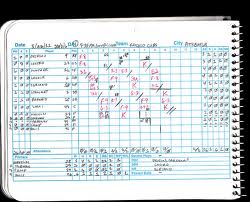 The idea of engaging non-profit board volunteers is sometimes treated by thought-leaders as a simple idea; however, in reality it is really hard. A few days ago I had this conversation with a board volunteer, and he said something I found very profound. He said, “When one person is disengaged, it is as simple as challenging them to step-up and join the group. When a few people are leading and the rest of the group is disengaged, it is far easier for the few to step-back because that is the norm.”
The idea of engaging non-profit board volunteers is sometimes treated by thought-leaders as a simple idea; however, in reality it is really hard. A few days ago I had this conversation with a board volunteer, and he said something I found very profound. He said, “When one person is disengaged, it is as simple as challenging them to step-up and join the group. When a few people are leading and the rest of the group is disengaged, it is far easier for the few to step-back because that is the norm.”
Obvious? Yes! Did I know this before I heard it? Of course. But I had never heard it stated quite so succinctly.
During this conversation, he also related a great quote from a business consultant he recently heard speak at a conference. The quote was “If you can’t change your people, change your people.” Upon hearing this, my mind first darted to Jim Collins, who famously talks about getting the right people on the bus and in the right seats.” Yet, surprisingly, my mind didn’t stay there. The cosmic jukebox in my head started playing a song that I still can’t get out of my head. Click here or on the YouTube screen below and please join me in singing . . .
[youtube=http://www.youtube.com/watch?v=PjQuZCTLAv4]
Yeah, I think Carol Burnett gave some great advice to board development committees when she sang her iconic sign-off song.
Carol reminds us that time flies when you’re having fun. She says early in the song: “Seems we just get started and before you Know it
Comes the time we have to say, ‘So long’.” In this one simple sentence, I am reminded of the following truisms for the board development committee:
- There is a beginning, middle and end to every board volunteer relationship.
- It is the Board Development Committee’s responsibility to manage every aspect of that relationship during every step down that path.
- In the beginning, expectations must be set or disengagement is almost inevitable (e.g. use job descriptions to recruit).
- During every step of the way, year-end evaluation is essential in order to maintain engagement. These aren’t always “pat-on-the-back” meetings. Sometimes, committee members need to ask tough questions during evaluation meetings such as: “What can we do to get you more involved in our resource development program? Is there something we can do to help you feel more comfortable with your roles and responsibilities? Are you sure this opportunity is a good fit or would everyone be better served if you stepped off the board and joined a committee?“
- In the end, compassion and grace — like you hear in Carol’s voice — are the values that carry the day. Hopefully, the volunteer concludes that they’re ready to move along to tackle other opportunities related to your mission and organization. However, more oftentimes it is obvious to everyone except the board volunteer. Not only must the committee exercise compassion and grace, but they must be strong and do what needs to be done. Too often committee volunteers kick the can down the road, which creates problems for another day.
When the norm on the board is disengagement, I’ve too often seen a frustrated Board Development Committee take the discussion into the boardroom. Their intention is good. After all, they want to wake some people up and shake them from their sleepy disengaged slumber. However, I’ve never seen this strategy work. In fact, it always backfires in one of two ways:
- Tempers flare because it feels like finger-pointing and accusations are being made.
- Committee members get frustrated because their “call to action” is met with a yawn of “disengagement”.
For me, it all comes back to that consultant’s quote that my friend shared with me: “If you can’t change your people, change your people.” with a chaser of “I’m so glad we’ve had this time together.”
I believe taking this conversation into the boardroom is tantamount to the board development committee abdicating their responsibilities and giving up. I suggest the more direct option of one-on-one meetings with disengaged volunteers.
If you are looking for resources and more reading materials on the subject of volunteer management, board development, board engagement, and how to move board volunteers onto other opportunities, you may want to click on some of the following links:
- DonorDreams blog: “Have you forgotten year-end evaluations and performance plans during the year-end scramble?“
- DonorDreams blog: “Is your non-profit board of directors engaged?“
- DonorDreams blog: “Not fundraising? Not engaged!“
- National Council of Nonprofits: Volunteers
- The Chronicle of Philanthropy: “How to Fire Lousy Board Members“
What have you done or seen done when disengagement is the norm in the boardroom? Do you agree or disagree with my thoughts on individual meetings versus group discussion? Please scroll down and share your thoughts in the comment box. We can all learn from each other.
Here’s to your health!
Erik Anderson
Founder & President, The Healthy Non-Profit LLC
www.thehealthynonprofit.com
erik@thehealthynonprofit.com
http://twitter.com/#!/eanderson847
http://www.facebook.com/eanderson847
http://www.linkedin.com/in/erikanderson847










 This phenomenon is called the “crowding out effect” and I wrote about it in the following blog posts in 2011:
This phenomenon is called the “crowding out effect” and I wrote about it in the following blog posts in 2011: The crowding out effect is real, and it is something non-profit organizations need to understand and deal with. If not, then I advise putting the following age-old expression in a frame above the boardroom door: “The road to hell is paved with good intentions.”
The crowding out effect is real, and it is something non-profit organizations need to understand and deal with. If not, then I advise putting the following age-old expression in a frame above the boardroom door: “The road to hell is paved with good intentions.” Fundraising policies
Fundraising policies Welcome to O.D. Fridays at DonorDreams blog. Every Friday for the foreseeable future we will be looking more closely at a recent post from John Greco’s blog called “
Welcome to O.D. Fridays at DonorDreams blog. Every Friday for the foreseeable future we will be looking more closely at a recent post from John Greco’s blog called “ I was recently engaged in an engaging discussion about board development with a great group of non-profit board volunteers. The range of topics in that conversation spanned issues such as prospect identification, evaluation methods, prioritizing prospect lists, cultivating prospects, recruitment process, orientation, recognition, and evaluation. It was one of those conversations that a facilitator loves because everyone was engaged and actively participating. There was an energetic dynamic in the room, and then someone asked a really tough question:
I was recently engaged in an engaging discussion about board development with a great group of non-profit board volunteers. The range of topics in that conversation spanned issues such as prospect identification, evaluation methods, prioritizing prospect lists, cultivating prospects, recruitment process, orientation, recognition, and evaluation. It was one of those conversations that a facilitator loves because everyone was engaged and actively participating. There was an energetic dynamic in the room, and then someone asked a really tough question: For decades (and probably centuries), board development committees have answered this question the old fashion way. They sat down around a table and talked it over. Those committees who were successful had a diversity of people sitting around the table and were able to assess a prospect’s social network in an anecdotal manner. They talked about what they see and hear about the prospect. Here are just some of the things they most likely talked through:
For decades (and probably centuries), board development committees have answered this question the old fashion way. They sat down around a table and talked it over. Those committees who were successful had a diversity of people sitting around the table and were able to assess a prospect’s social network in an anecdotal manner. They talked about what they see and hear about the prospect. Here are just some of the things they most likely talked through: However, there are some “21st Century” tools that your board development committee might want to start using when talking through the issue of a prospect’s network. Consider the following:
However, there are some “21st Century” tools that your board development committee might want to start using when talking through the issue of a prospect’s network. Consider the following: It’s the end of the year, which always seems like a good time to take stock. Did I meet my obligations? Did I rise to the occasion? Did I do what I said I would? Have I become what I aspired to be? Am I living an authentic life?
It’s the end of the year, which always seems like a good time to take stock. Did I meet my obligations? Did I rise to the occasion? Did I do what I said I would? Have I become what I aspired to be? Am I living an authentic life?


